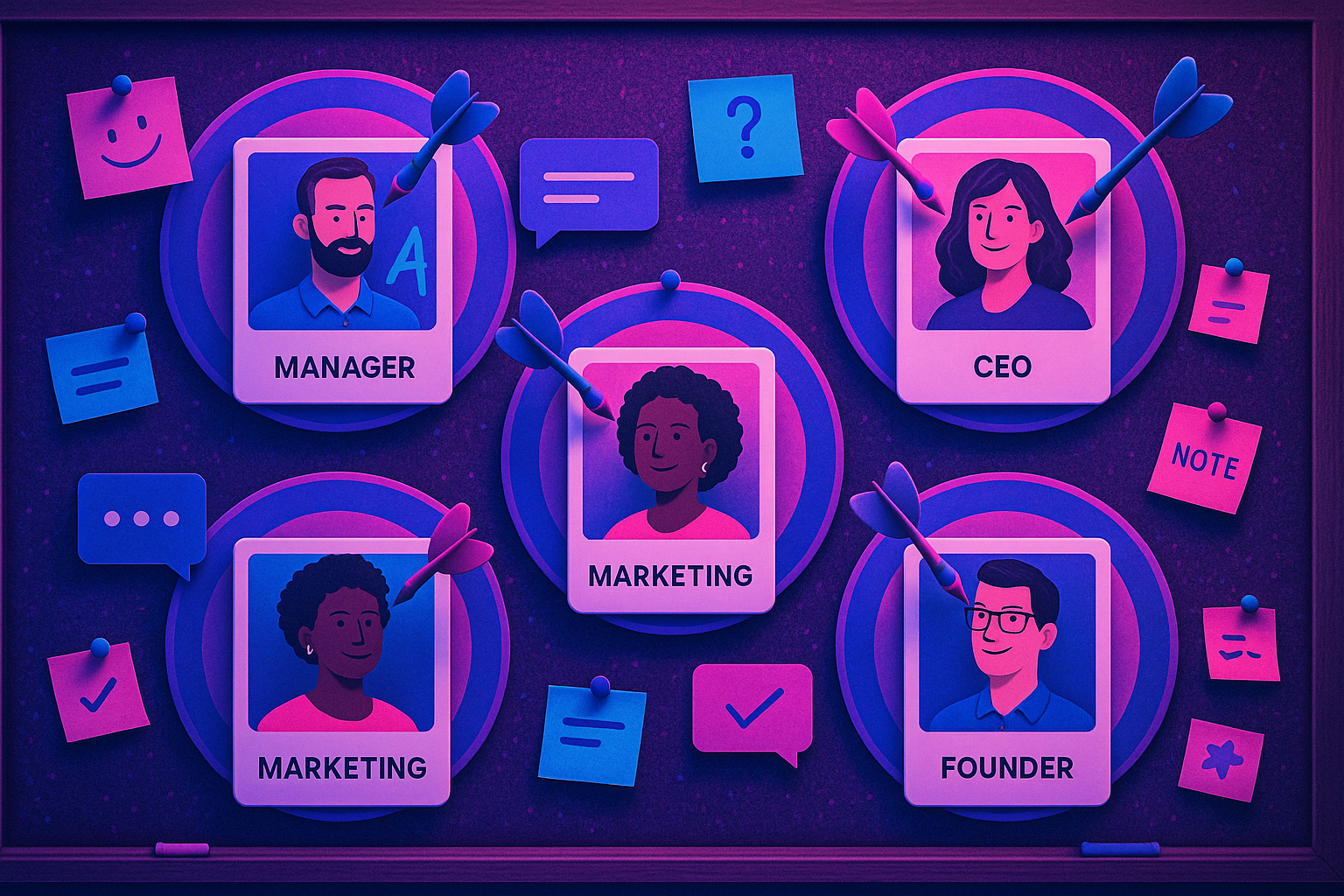Intro: Outreach Isn’t About Volume, It’s About Resonance
There’s a reason most outbound sales sequences don’t work: they’re built for activity, not connection. We’ve all seen the automated pitches, lifeless intros, and generic value props flooding our inboxes. They don’t start conversations, they end them.
But when outbound sequences are rooted in context, intent, and timing, they cut through the noise. They feel personalized even if they’re not 1:1. They respect the ICP. And they open the door for real trust, not just a click.
Outbound isn’t dead. It’s just misunderstood. And when used strategically, it’s one of the fastest ways to validate messaging, qualify interest, test positioning, and create early momentum in your sales funnel. Especially for B2B startups, outbound sequences are often the first proof of product-market resonance.
Why
Outbound should do more than generate pipeline, it should sharpen your positioning. Every message you send is a micro-test: Does this resonate? Is this pain real? Is our value clear?
Used properly, outbound:• Surfaces real-time feedback from your market• Accelerates ICP learning by testing angles and objections
• Generates qualified intent from cold contacts
• Complements inbound efforts by reinforcing key themes
• Drives fast validation of GTM assumptions in new markets
When structured as a learning loop, outbound becomes a strategic growth lever, not just a sales tactic.
How
1. Start With the ICP, Not the Script
Before you write a single word, define your ICP:
• Who are they? (role, seniority, vertical)
• What urgent or persistent problem do they face?
• What language do they use to describe it?
• What triggers might show they’re ready to act?
Use voice-of-customer insights from sales calls, support tickets, and market research. The more accurate your ICP understanding, the more natural your sequence will feel.
2. Use Conversation-First Framing
Every step in the sequence should serve one goal: spark dialogue. Not a demo, not a pitch. A real response.
That means:
• Open with curiosity, not credentials
• Ask thoughtful questions grounded in their reality
• Share something timely, not templated
3. Sequence by Intent, Not Time
Build sequences around buying signals, ICP context, and content consumption behavior:
• Email 1 → Insightful opener tied to a shared industry trend
• Email 2 → Ask a question or share a short insight
• Email 3 → Include a relevant resource like a checklist or short case study
• Email 4 → Offer to connect via LinkedIn or async feedback
• Email 5 → Highlight a customer win or quick teardown offer
4. Align Content With Funnel Stage
Match what you share to where the ICP is in their journey:
• TOFU: Industry benchmarks, trend snapshots, provocative questions
• MOFU: Use-case templates, short strategic guides, comparison tools
• BOFU: ROI calculators, product demo videos, deep case studies
5. Humanize the Follow-up
Make your final message feel human:
• “Happy to leave this here if timing isn’t right, can I check back in Q4?”
• “Would you prefer a summary you can skim later?”
• “If you’re curious but swamped, I can send a 2-minute Loom that explains it.”
What
Outbound tools aren’t just about sending messages, they’re about enabling smarter workflows, better personalization, and higher response rates. Below is a quick breakdown of popular tools in B2B outbound, especially for teams using LinkedIn, email, and video:
| Feature |
N8N |
Make.com |
| Workflow Model |
Map-like canvas (modular, flexible) |
Linear scenario builder (simpler logic) |
| Best For |
Custom workflows, advanced logic, API usage |
Beginners, marketers, quick setup |
| Templates |
Growing community templates |
Thousands of built-in templates |
| AI Integrations |
Easy to connect GPT, Dust, and APIs |
Plug-and-play, less custom AI flexibility |
| Interface Style |
Open modular canvas (like a whiteboard) |
Step-by-step chain (like a flowchart) |
| Open Source |
Yes, fully open-source and self-hostable |
No, commercial SaaS only |
Each tool covers a slice of the outbound puzzle, whether prospecting, enrichment, or delivery. Pick tools that align with your volume, personalization goals, and internal capacity.
What Else to Consider, How Tools and AI Are Transforming Outbound
The rise of AI-first sales tools is reshaping how outbound is executed. Platforms like Clay integrate directly with LLMs and enrichment APIs, allowing teams to build logic-driven outreach systems that automatically customize messaging based on job title, industry signals, even recent company funding data.
For example:
• Clay can enrich leads with AI-written personalization lines.
• PhantomBuster scrapes LinkedIn data that feeds into Google Sheets or Airtable for scoring.
• Buzz lets you record short, async videos and pair them with outreach cadences in Apollo.
These tools turn SDRs from message-senders into orchestrators of personalized workflows.
What is an SDR?
A Sales Development Representative (SDR) is someone responsible for outbound prospecting, generating and qualifying leads before handing them to Account Executives. In modern growth teams, SDRs often act as mini-growth operators, combining tools, AI, and messaging experimentation.
This shift toward automated intelligence doesn't remove the human, it augments it. AI enables faster iteration, better message-market match, and scalable learning.
FAQs
What is an outbound sequence in B2B sales?
A series of structured outreach messages, via email, LinkedIn, or video, sent to cold prospects to spark engagement.
How do I create outbound sequences that work?
Start with a defined ICP, use short, question-based messages, and align content by funnel stage. Add tools to automate and measure.
Which platform is best for outbound sequences?
Depends on your team. LinkedIn Sales Navigator + Waalaxy is great for lean teams. Clay + Outreach works for scale.
What’s the best CTA in an outbound email?
One that invites conversation. Examples: “Want a teardown?” or “Would this resource help?”
How do outbound sequences help with product-market fit?
Cold outreach gives real feedback. If no one responds, your message might not be clear, or the pain isn’t strong enough.
Is outbound only for SDRs?
No. Founders, marketers, and growth teams use outbound to test positioning, validate demand, and engage high-value prospects.
Should I personalize every message?
Yes, where possible. But a well-structured, relevant message with light personalization often performs best at scale.
How does outbound support full-funnel growth?
It drives TOFU discovery, MOFU engagement, and BOFU conversion, especially when paired with smart content and lead magnets.
Can Funnely help with outbound?
Yes. Funnely creates sequences mapped to funnel stages and ICP behavior, plus content that fits each step.
Conclusion: Outbound Isn’t Spam, It’s a Strategy
When outbound is done right, it’s not intrusive, it’s valuable. It’s not annoying, it’s welcomed. It’s not about clicks, it’s about clarity.
Great outbound sequences feel like insight, not interruption. They reflect real understanding of a user’s problem, and offer small solutions that open bigger conversations.
Every message is a moment of positioning. Every reply is a validation. Every silence is a chance to learn.
At Funnely, we help teams build outbound sequences that connect, qualify, and convert, without sacrificing authenticity.
Explore how outbound content aligns with funnel strategy or request a free diagnosis to build your outbound system.



%20Strategy%20and%20How%20Do%20You%20Build%20One%20That%20Works%3F.jpeg)





